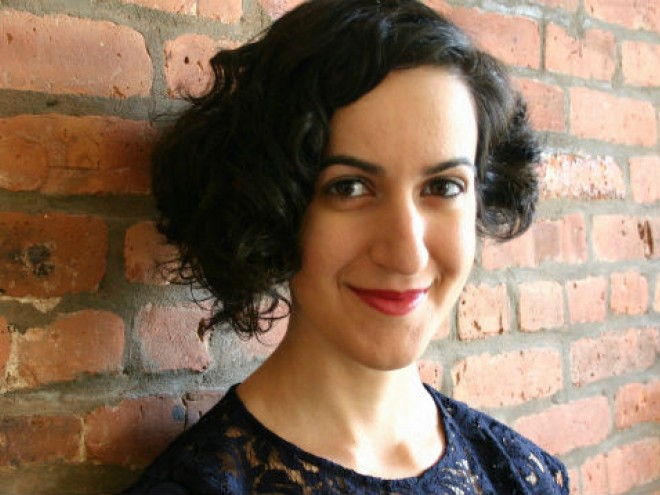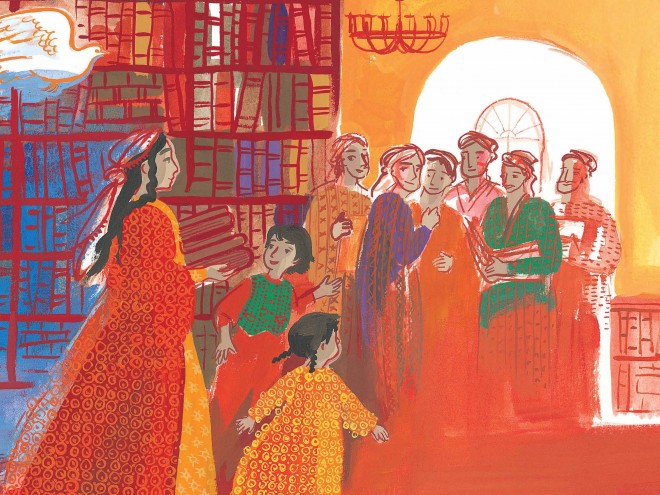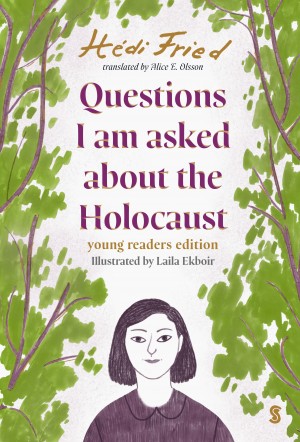In sixteenth-century Mosul (in today’s Iraq), there lived a Jewish girl who longed to be a Torah scholar. Facing discouraging obstacles, but gifted and persistent, she would not surrender her dreams to a life of enclosed domesticity. That girl was Osnat Barzani (1590−1670), and a new picture book written by Sigal Samuel and illustrated by Vali Mintzi relates the true story of the extraordinary woman’s life. Osnat and Her Dove is a rare work, one whose literary and artistic eloquence are as outstanding as its inspiring lesson that studying, teaching, and leading are not the exclusive province of men in the Jewish sphere.
There are no extraneous words or images in Osnat and her Dove; each page adds a layer to the reader’s insight into Osnat’s journey. The protagonist first appears on the title page as a young girl with long black braids holding a massive volume and looking upwards, an indicator that she will find ways to use her intellect. A visual clue of her current environment appears when she looks out a window at the busy street: a man walks with books while a woman headed in the opposite direction carries a baby on her back and another child clings to her dress. To reinforce this message about the community’s hierarchy, Mintzi shows a mother bird followed by her chicks. Will Osnat be able to alter her own path, given the inflexible expectations that surround her?
Osnat refuses to marry anyone who will not accommodate her desire to study. Despite some initial resistance, her father, Rabbi Samuel Barzani, ultimately supports her in this demand. Jacob, Osnat’s husband, becomes a true partner, enabling her to both raise a family with him and continue her Torah study. Samuel does not offer an unrealistic picture of Osnat’s success, which is clearly only possible because her father and then her husband are unusually supportive. Osnat herself is aware of her own exceptionalism. When Jacob dies, even while she grieves, Osnat aspires to take control of herself and of her husband’s legacy. Her male students accept her authority and the yeshiva, founded by her father and then led by her husband, continues to thrive. “No one had ever heard of a woman leading a yeshiva anywhere in the world.” To Osnat, those words are only a challenge to be confronted with her own internal strength and understanding of the Torah.
Osnat’s father is a constant presence, even after his death. When she dreams of him, his wordless smile encourages her to pursue her goals. When she enacts her destiny by teaching her male students, speaking Hebrew words to them, “[s]he felt comforted, as if her father were close by.” Scenes combining the intellectual and mystical sides of Osnat integrate these aspects of her character, making it clear to readers that learning Torah comes from both her heart and her mind. The dove of the book’s title becomes a recurrent motif, perched on Osnat’s arm at her wedding and posed on the carpet of the yeshiva where she teaches. When it appears that a hunter has killed the dove, Osnat miraculously heals the bird, adding to the respect and awe surrounding her: “Rabbis from near and far began sending her letters. One called her, ‘my mother, my rabbi.’” As incredible as her healing powers is Osnat’s ability to dissolve entrenched opposition to her gender.
Mintzi’s illustrations have an astonishing beauty. Dark blue backgrounds and white stars give a feeling of illuminated mystery, while interior scenes convey domestic activity and intense Torah study in colors as bright as a medieval manuscript. In addition to being a rabbi and a scholar, Osnat is a daughter, wife, and mother; her young children accompany her as she teaches and learns. This remarkable book conveys both Osnat’s unusual life, full of contradiction, and the truth about women’s potential. When encouraged to flourish, Osnat and others like her can heal the world.
This highly recommended book includes an author’s note with additional historical context.
Emily Schneider writes about literature, feminism, and culture for Tablet, The Forward, The Horn Book, and other publications, and writes about children’s books on her blog. She has a Ph.D. in Romance Languages and Literatures.




